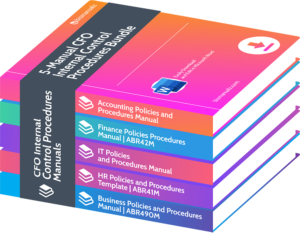What is CFO Risk Management In Finance?

Do you know what it takes to effectively manage risk in your financial decisions? As a CFO, understanding risk management is crucial in ensuring the stability and success of your company. In today’s volatile economic climate, it is more important than ever to have a solid understanding of risk and how to mitigate it. In this article, we will discuss the essential knowledge a CFO should have when it comes to risk management in finance. What is CFO risk management in finance?
What is the Role of a CFO in Risk Management?
As the financial landscape becomes increasingly complex, the role of a CFO in risk management has become more crucial than ever. A CFO must not only understand the potential risks faced by their company, but also have the knowledge and skills to effectively manage and mitigate these risks.
In this section, we will delve into the various responsibilities of a CFO in risk management, including identifying and assessing risks, developing risk management strategies, implementing policies, and monitoring and reporting on risks. By understanding the role of a CFO in risk management, companies can better navigate potential challenges and ensure their financial stability.
1. Identifying and Assessing Risks
Identifying and assessing risks is a crucial step in risk management for CFOs in the finance industry. This process involves the following steps:
- Identify potential risks by analyzing both internal and external factors that could potentially impact the organization’s financial stability.
- Assess the likelihood and potential impact of each identified risk.
- Prioritize risks based on their severity and significance to the organization.
- Quantify risks by assigning a numerical value to each risk based on its probability and potential impact.
- Document the identified risks and their assessment results for future reference and analysis.
By effectively identifying and assessing risks, CFOs can develop appropriate risk management strategies and implement necessary measures to mitigate potential threats.
2. Developing Risk Management Strategies
Developing effective risk management strategies is crucial for CFOs in finance. Here are the key steps to consider:
- Identify and analyze potential risks specific to the organization’s industry and operations.
- Assess the likelihood and impact of each risk, prioritizing those with the highest potential impact.
- Develop strategies to mitigate or minimize the identified risks, such as diversifying investments or implementing hedging techniques.
- Create contingency plans to address unexpected events or crises that may disrupt the organization’s operations.
- Regularly review and update risk management strategies to adapt to changing market conditions or emerging risks.
By following these steps, CFOs can proactively manage risks and safeguard the financial stability and success of their organizations. Remember, risk management is an ongoing process that requires continuous monitoring and adaptation.
3. Implementing Risk Management Policies
Implementing risk management policies is crucial for CFOs to effectively mitigate risks in finance. This involves a series of steps:
- Establish a risk management framework: Define the objectives, scope, and responsibilities of the risk management process.
- Identify and assess risks: Conduct a thorough analysis of potential risks and their impact on the organization.
- Develop strategies for managing risks: Create strategies to mitigate and control identified risks, taking into account the organization’s risk appetite.
- Utilize risk management tools and techniques: Deploy appropriate tools and techniques to effectively monitor and manage risks.
- Monitor and report on risks: Continuously monitor the effectiveness of risk management strategies and provide regular reports to stakeholders.
True story example: A CFO implemented a comprehensive risk management policy that identified and addressed potential market risks, resulting in the company successfully navigating a downturn and minimizing financial losses.
4. Monitoring and Reporting on Risks
Monitoring and reporting on risks is an essential responsibility for CFOs in risk management. To effectively handle this task, CFOs should follow a systematic approach:
- Establish a monitoring framework: Develop a structured process to regularly monitor and assess risks, including setting up key risk indicators and thresholds.
- Implement risk reporting systems: Utilize appropriate tools and techniques to collect and analyze relevant data, generating comprehensive reports for management and stakeholders.
- Review risk mitigation strategies: Continuously evaluate the effectiveness of current risk mitigation measures and update them as necessary.
- Communicate with stakeholders: Maintain clear and timely communication with both internal and external stakeholders to keep them informed about risk profiles and management strategies.
By diligently monitoring and reporting on risks, CFOs can proactively identify potential issues and make informed decisions to safeguard the financial health of their organizations.
What are the Key Risks in Finance?
As a CFO, understanding the potential risks in finance is crucial for effectively managing and mitigating them. In this section, we will explore the key risks that may affect a company’s financial stability and success.
From market risk and credit risk to liquidity risk, operational risk, and strategic risk, we will discuss each type of risk and its potential impact on a company’s financial health. By gaining a comprehensive understanding of these risks, CFOs can make informed decisions to proactively manage and minimize their effects.
1. Market Risk
Market risk is a significant concern for financial institutions and investors. It refers to potential losses that may arise due to changes in market conditions, such as fluctuations in interest rates, exchange rates, and stock prices. To effectively manage market risk, CFOs should:
- Identify and assess potential market risks specific to their organization’s operations and financial instruments.
- Develop strategies to mitigate these risks, such as hedging or diversification.
- Implement risk management policies and procedures to monitor and control market risk exposure.
- Regularly monitor and report on market risk, ensuring timely actions are taken to address any emerging issues.
In 2008, during the global financial crisis, many financial institutions suffered severe losses due to their exposure to market risk. Lehman Brothers, a renowned investment bank, collapsed primarily due to its heavy investments in mortgage-backed securities, which plummeted in value during the crisis. This event emphasized the critical importance of effective market risk management for CFOs and financial institutions.
2. Credit Risk
2. Credit risk is a major concern for CFOs when it comes to risk management. It refers to the possibility of loss due to a borrower’s inability to repay debts. This risk can be reduced through various strategies, including:
- Conducting thorough credit assessments and due diligence before extending credit.
- Diversifying the credit portfolio to minimize exposure to a single borrower or industry.
- Implementing credit risk monitoring systems to detect early signs of potential default.
- Setting up credit risk limits to control the maximum amount of credit exposure.
- Establishing robust credit risk management policies and procedures to ensure consistency and compliance.
By effectively managing credit risk, CFOs can protect the financial stability and success of their organization.
3. Liquidity Risk
Liquidity risk is a crucial aspect of financial risk management that CFOs need to understand and effectively address. To mitigate liquidity risk, CFOs should consider the following steps:
- Monitor cash flows: Regularly analyze cash inflows and outflows to ensure sufficient liquidity.
- Diversify funding sources: Relying on a single source of funding increases the risk of liquidity. CFOs should explore multiple funding options.
- Maintain cash reserves: Set aside liquid assets to meet short-term obligations and unexpected cash needs.
- Establish lines of credit: Arrange credit facilities with banks or financial institutions to access additional liquidity when required.
- Develop contingency plans: Prepare for potential disruptions in liquidity by creating strategies to manage unexpected cash shortfalls.
These steps enable CFOs to proactively manage liquidity risk and ensure the financial stability of their organizations.
4. Operational Risk
Operational risk is a crucial aspect of risk management in finance that CFOs need to understand and address. To effectively mitigate operational risk, CFOs can:
- Implement robust internal controls and processes to prevent errors or fraud related to operational activities.
- Regularly review and update operational procedures to ensure efficiency and effectiveness in operations.
- Invest in technology systems and cybersecurity measures to protect against data breaches and disruptions that can lead to operational risk.
- Develop contingency plans to manage unexpected events or emergencies that may pose operational risk.
- Train and educate employees on risk awareness and compliance practices to minimize operational risk.
By proactively managing operational risk, CFOs can safeguard the financial stability and reputation of their organizations.
5. Strategic Risk
Strategic risk is a crucial aspect of risk management in finance that CFOs must be knowledgeable about. To effectively handle strategic risk, CFOs can take the following steps:
- Identify potential strategic risks that may affect the organization’s objectives and goals.
- Assess the likelihood and potential impact of each strategic risk.
- Develop risk management strategies tailored to address and mitigate strategic risks.
- Implement risk management policies and procedures to ensure proper monitoring and control of strategic risks.
- Regularly monitor and report on strategic risks to provide relevant information to key stakeholders.
By following these steps, CFOs can proactively manage and mitigate strategic risks, safeguarding the financial well-being of the organization.
How Can a CFO Mitigate Risks in Finance?
As a CFO, the responsibility of managing risks in finance falls heavily on your shoulders. In this section, we will discuss various strategies and techniques that can help you mitigate risks in your financial operations.
From diversifying investments to creating reserves and implementing risk management tools, we will cover all the essential aspects that a CFO should know in order to protect their company’s financial stability.
Additionally, we will also explore the importance of developing contingency plans to prepare for unexpected events or crises. Let’s dive in and discover how a CFO can effectively manage risks in finance.
1. Diversification of Investments
Diversification of investments is an essential strategy for mitigating risks in finance. Here are the steps to effectively diversify investments:
- Allocate investments among different asset classes, such as stocks, bonds, and real estate.
- Invest in a variety of industries to reduce risks specific to certain sectors.
- Spread investments across different geographic regions to minimize risks specific to certain countries.
- Consider investing in a range of market capitalizations, including large-cap, mid-cap, and small-cap stocks.
- Utilize investment vehicles like mutual funds and exchange-traded funds (ETFs) that offer broad diversification.
- Regularly review and rebalance your portfolio to maintain your desired asset allocation.
2. Creating and Maintaining Reserves
Creating and maintaining reserves is a crucial aspect of risk management for CFOs in the finance industry. To ensure effective risk mitigation, here are the essential steps involved in this process:
- Analyze financial data to determine the appropriate level of reserves needed.
- Establish clear guidelines and policies for creating and maintaining reserves.
- Allocate funds regularly to gradually build up reserves based on the organization’s risk appetite.
- Periodically monitor and evaluate the adequacy of reserves and make necessary adjustments.
- Ensure transparency and accurate reporting of reserve levels to all stakeholders.
During the 2008 financial crisis, a diligent CFO who had created and maintained reserves helped their company withstand the storm. The reserves provided a safety net to cover unexpected losses, ensuring the company’s stability and allowing it to take advantage of new opportunities when the market recovered. This highlights the critical role of creating and maintaining reserves in mitigating financial risks.
3. Implementing Risk Management Tools and Techniques
Implementing risk management tools and techniques is a crucial aspect of a CFO’s role in effectively managing financial risks. Here are the necessary steps to successfully implement these tools and techniques:
- Identify and assess potential risks in various areas of finance.
- Research and select appropriate risk management tools and techniques.
- Train and educate employees on the proper use of these tools.
- Integrate the tools into the company’s existing risk management framework.
- Regularly monitor and evaluate the effectiveness of the tools and techniques.
Fact: According to a survey conducted by Deloitte, 94% of CFOs believe that implementing risk management tools and techniques is a critical component of their role in driving business success.
4. Developing Contingency Plans
Developing contingency plans is an essential aspect of risk management for CFOs. It involves being proactive in mitigating potential risks and ensuring business continuity. Here is a list of steps to effectively develop contingency plans:
- Identify potential risks: Analyze the various risks that could impact the organization and its financial stability.
- Assess the impact: Evaluate the potential consequences of each identified risk to determine their severity.
- Create response strategies: Develop specific plans to address each identified risk, outlining actions to mitigate their impact.
- Allocate resources: Allocate necessary resources, such as funds and personnel, to effectively implement the contingency plans.
- Communicate and train: Ensure all relevant stakeholders are aware of the contingency plans and conduct training sessions to ensure their understanding.
- Test and update: Regularly test the contingency plans to identify any gaps or areas of improvement, and update them accordingly.
By following these steps, CFOs can ensure their organizations are well-prepared to handle unforeseen events and minimize potential financial risks.
CFO Risk Management In Finance
The role of a CFO in risk management is more important than ever as the financial landscape gets more complex. A CFO needs to be aware of the possible risks that their business may encounter, as well as possess the expertise needed to properly manage and reduce those risks.
Frequently Asked Questions

What is the role of a CFO in risk management in finance?
The CFO is responsible for overseeing the company’s financial risk management strategies and ensuring that they align with the overall business goals and objectives.
As a key decision-maker, the CFO must have a thorough understanding of the potential risks facing the company and identify ways to mitigate and manage these risks.
The CFO also plays a crucial role in communicating the company’s risk management approach to stakeholders and ensuring compliance with relevant laws and regulations.
What are the key elements of risk management in finance?
Risk management in finance involves identifying, assessing, and managing potential risks that could impact the financial performance and stability of a company. The key elements of this process include:
- Identifying potential risks
- Analyzing the likelihood and potential impact of risks
- Implementing risk management strategies
- Monitoring and reviewing the effectiveness of risk management strategies
- Communicating risks and mitigation strategies to stakeholders
- Maintaining compliance with relevant laws and regulations
What are some common types of financial risks?
Financial risks can arise from a variety of sources, including market volatility, credit risk, liquidity risk, operational risk, and regulatory risk. Market volatility refers to the potential losses incurred due to changes in market conditions, such as currency fluctuations or interest rate changes.
Credit risk is the risk of financial loss if a borrower fails to repay a loan or fulfill a financial obligation. Liquidity risk refers to the potential for a company to experience cash flow problems. Operational risk involves the potential for losses due to internal processes, systems, or human error. Regulatory risk refers to the potential for financial losses due to non-compliance with laws and regulations.
How can a CFO assess and manage financial risks?
A CFO can use various tools and techniques to assess and manage financial risks. These may include financial modeling, stress testing, scenario analysis, risk registers, and risk assessment frameworks. By using these methods, a CFO can identify potential risks, analyze their potential impact, and develop strategies to mitigate and manage these risks.
Why is risk management important for a CFO?
Risk management is an essential aspect of a CFO’s role as it helps ensure the financial stability and sustainability of a company. By effectively managing risks, a CFO can help protect the company from potential financial losses and maintain its financial health. This, in turn, can contribute to the company’s long-term success and growth.
How can a CFO balance risk and growth in financial decision-making?
A CFO must strike a balance between managing risks and pursuing growth opportunities. This can be achieved by conducting thorough risk assessments, implementing effective risk management strategies, and regularly monitoring and reviewing the risk management process. Moreover, a CFO must also consider the company’s risk appetite and overall business goals when making financial decisions.
















Leave a Reply